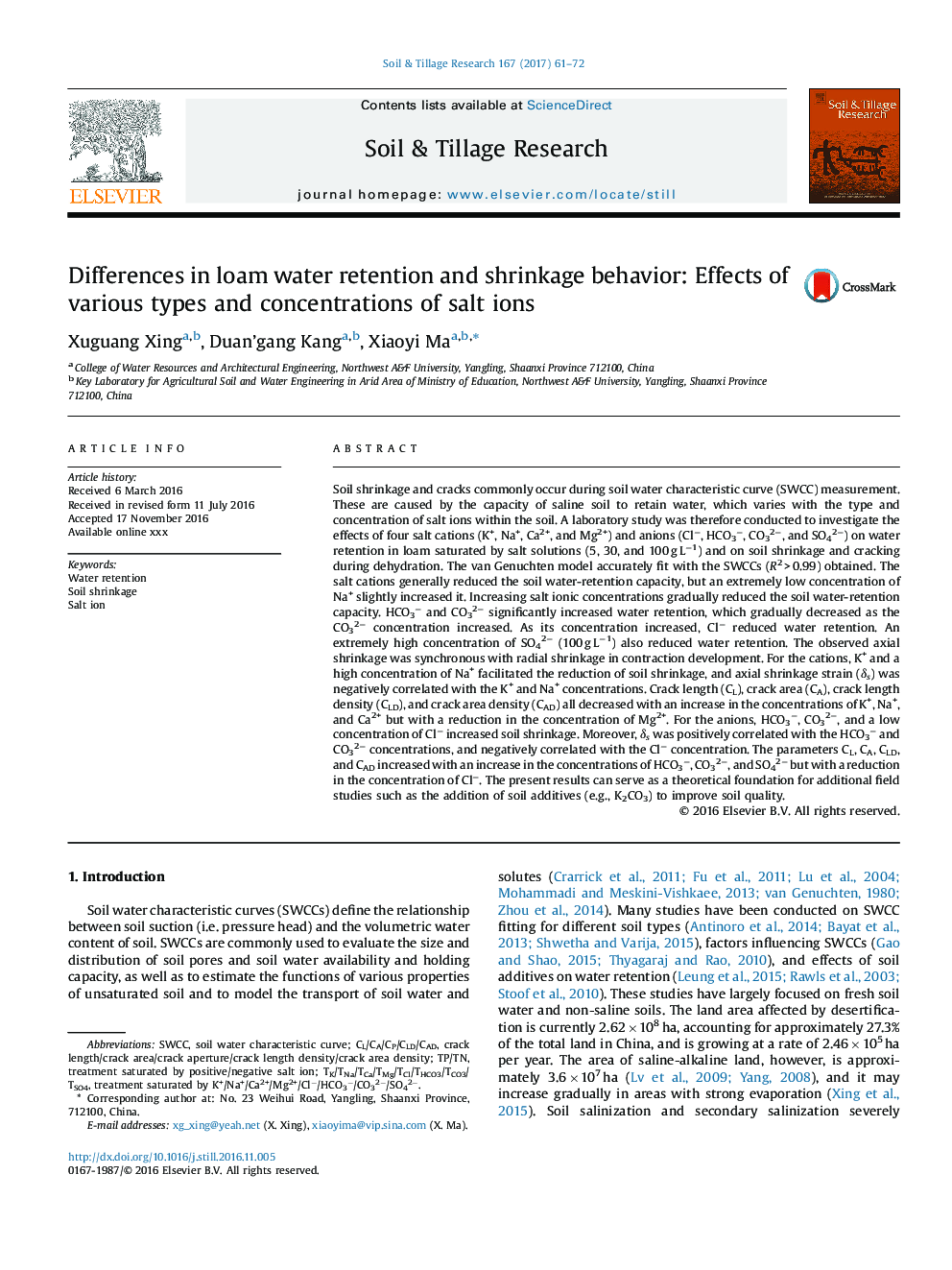| Article ID | Journal | Published Year | Pages | File Type |
|---|---|---|---|---|
| 4927595 | Soil and Tillage Research | 2017 | 12 Pages |
Abstract
Soil shrinkage and cracks commonly occur during soil water characteristic curve (SWCC) measurement. These are caused by the capacity of saline soil to retain water, which varies with the type and concentration of salt ions within the soil. A laboratory study was therefore conducted to investigate the effects of four salt cations (K+, Na+, Ca2+, and Mg2+) and anions (Clâ, HCO3â, CO32â, and SO42â) on water retention in loam saturated by salt solutions (5, 30, and 100 g Lâ1) and on soil shrinkage and cracking during dehydration. The van Genuchten model accurately fit with the SWCCs (R2 > 0.99) obtained. The salt cations generally reduced the soil water-retention capacity, but an extremely low concentration of Na+ slightly increased it. Increasing salt ionic concentrations gradually reduced the soil water-retention capacity. HCO3â and CO32â significantly increased water retention, which gradually decreased as the CO32â concentration increased. As its concentration increased, Clâ reduced water retention. An extremely high concentration of SO42â (100 g Lâ1) also reduced water retention. The observed axial shrinkage was synchronous with radial shrinkage in contraction development. For the cations, K+ and a high concentration of Na+ facilitated the reduction of soil shrinkage, and axial shrinkage strain (δs) was negatively correlated with the K+ and Na+ concentrations. Crack length (CL), crack area (CA), crack length density (CLD), and crack area density (CAD) all decreased with an increase in the concentrations of K+, Na+, and Ca2+ but with a reduction in the concentration of Mg2+. For the anions, HCO3â, CO32â, and a low concentration of Clâ increased soil shrinkage. Moreover, δs was positively correlated with the HCO3â and CO32â concentrations, and negatively correlated with the Clâ concentration. The parameters CL, CA, CLD, and CAD increased with an increase in the concentrations of HCO3â, CO32â, and SO42â but with a reduction in the concentration of Clâ. The present results can serve as a theoretical foundation for additional field studies such as the addition of soil additives (e.g., K2CO3) to improve soil quality.
Related Topics
Physical Sciences and Engineering
Energy
Renewable Energy, Sustainability and the Environment
Authors
Xuguang Xing, Duan'gang Kang, Xiaoyi Ma,
